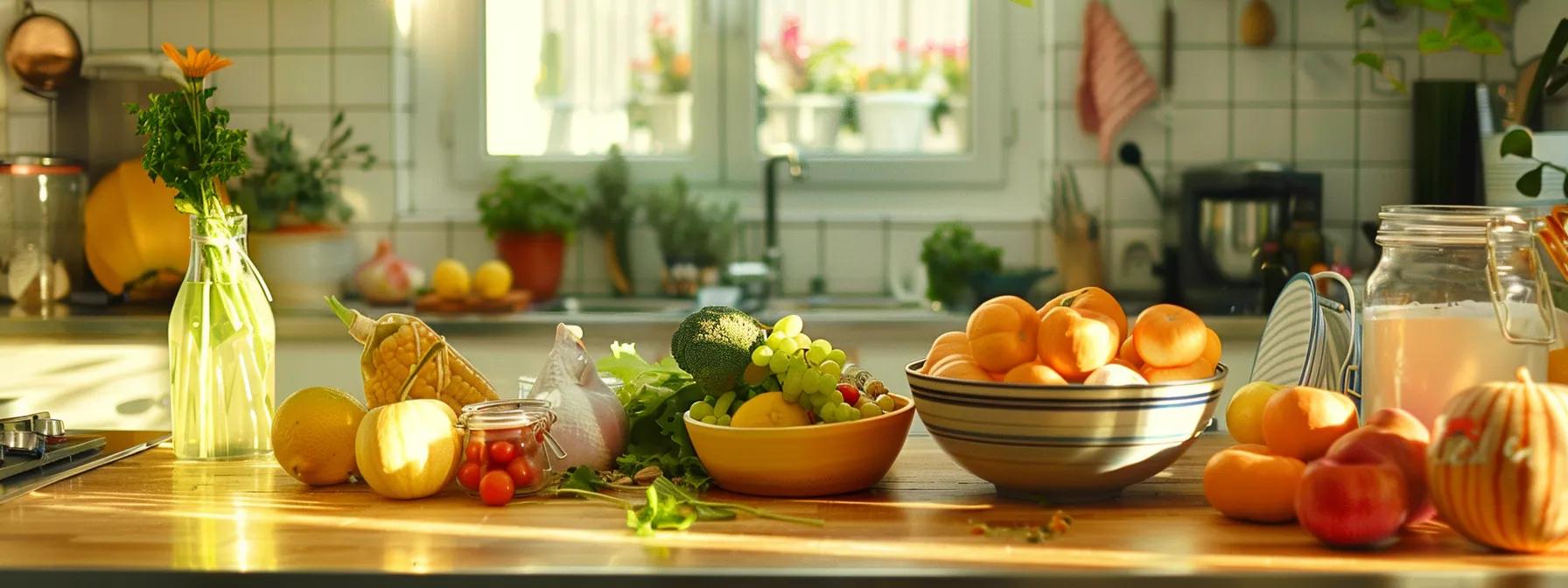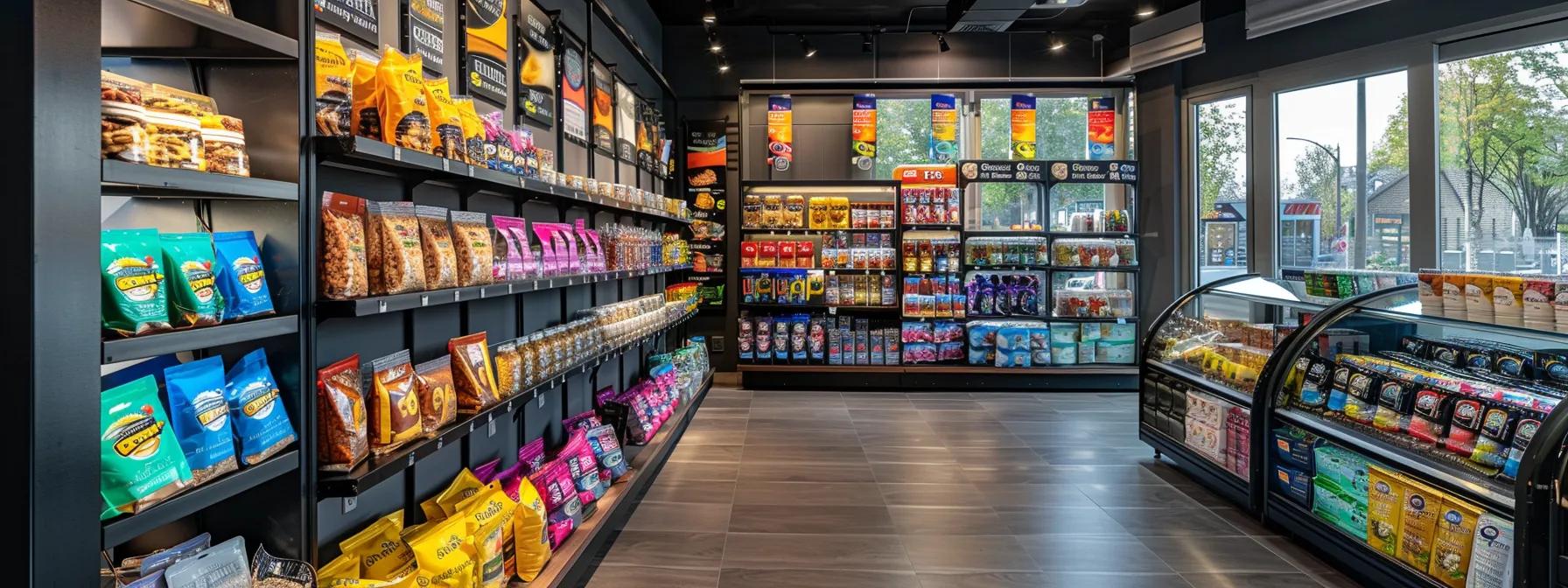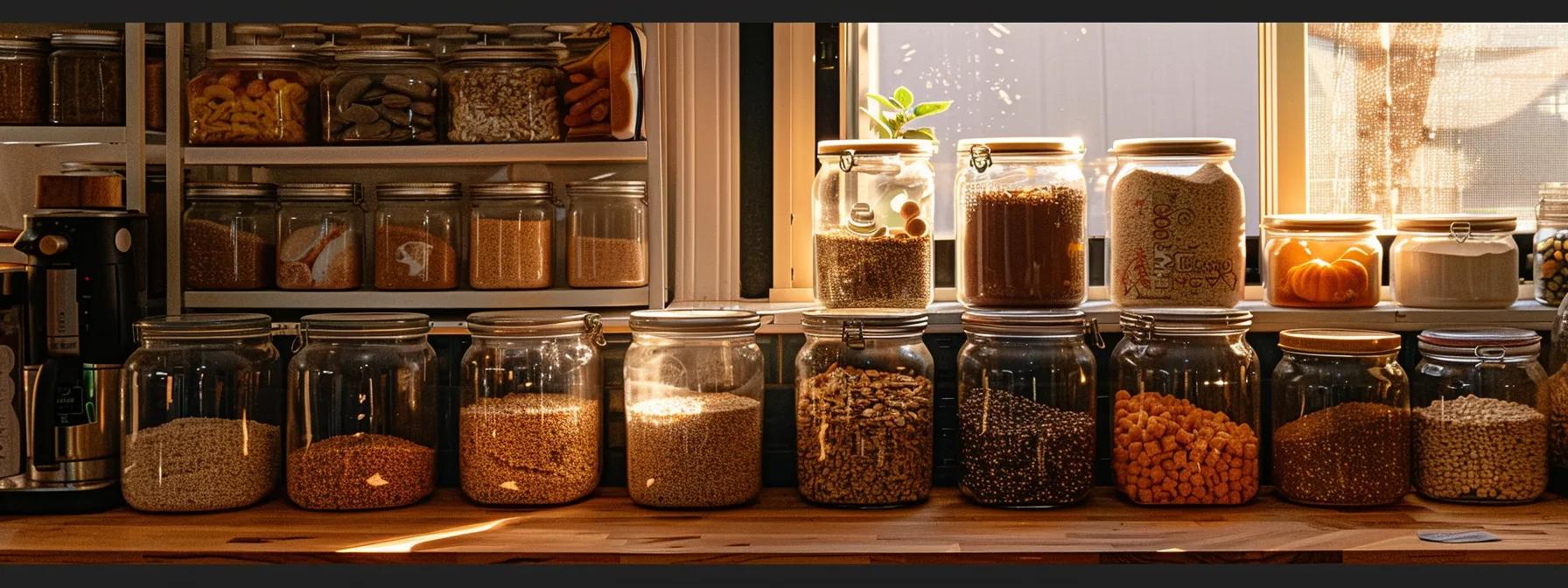
Nutritious Ingredients for Homemade Cat Treats Explained
The rising interest in holistic pet nutrition has brought homemade cat treats to the forefront as a customizable option for cat owners who want to ensure their feline companions receive high-quality nutrients. By crafting your own treats, you control which ingredients best meet feline dietary needs while avoiding artificial preservatives, fillers, and additives found in many commercial products. In contrast, homemade treats can boost overall well-being, improve digestion, and support vibrant fur and energy levels.
This article provides an in-depth explanation of the most nutritious ingredients for homemade cat treats. It discusses how to identify prime protein sources, choose healthy fats, integrate safe fruits and vegetables, and select appropriate grains and binding agents. It also covers key vitamins and minerals for feline health and highlights harmful substances to avoid. With detailed explanations, lists, and tables, this guide equips pet parents with the knowledge to prepare balanced, safe treats that complement a cat’s overall diet.
The article is divided into several key segments: - Identifying Prime Protein Sources for Feline Treats - Choosing Healthy Fats for Enhanced Cat Treat Palatability and Health - Integrating Safe Fruits and Vegetables Into Nutritious Cat Treats - Selecting Appropriate Grains and Binding Agents for Homemade Goodies - Key Vitamins and Minerals in Nutritious Ingredients for Cat Treats - Harmful Substances to Exclude From Your Homemade Cat Treats
Each section explains how individual ingredients contribute to feline metabolic function and overall vitality while offering structured comparisons and actionable tips.
Identifying Prime Protein Sources for Feline Treats
Protein is essential for cats because they are obligate carnivores. This section discusses prime protein ingredients that support muscle mass, immune function, and overall vitality while being easy to digest.
Selecting Lean Meats for Optimal Cat Treat Nutrition
Lean meats such as chicken, turkey, and beef provide high-quality protein with low saturated fat. These are ideal for cats that require concentrated nutrients for muscle support and overall vitality. When preparing lean meats, visible fat and connective tissues should be removed, and methods like thorough cooking or blending in a food processor help create a texture that is easy for cats to chew and digest.
Key lean meat options include: 1. Chicken Breast – High protein, low fat; excellent treat base. 2. Turkey Breast – Versatile, lean, and similar in benefits to chicken. 3. Lean Beef – Cuts like sirloin supply essential amino acids and iron. 4. Rabbit – Balanced amino acids and hypoallergenic for sensitive cats. 5. Venison – Free-range qualities; lean with robust nutrients including B vitamins. 6. Quail – Easily digestible with high-quality protein. 7. Certain Lean Fish (e.g., cod) – Can supplement meat proteins without adding extra fat.
Minimal use of oil and complete cooking safeguards against pathogens, while methods such as baking or boiling help preserve nutrient density. Combining lean meats with other proteins can also create a balanced amino acid profile.
Incorporating Fish for Omega Fatty Acids in Cat Snacks
Fish provides high-quality protein and essential omega-3 fatty acids (EPA and DHA) that improve skin, coat, neural, and anti-inflammatory health. Methods like lightly steaming fish help retain these delicate omega fatty acids. It is crucial to choose fish that are low in mercury and to remove all bones for safety.
Beneficial fish include: 1. Salmon – Rich in omega-3s and appealing flavor. 2. Mackerel – Provides robust omega fatty acids and minerals such as selenium. 3. Sardines – Nutrient-dense and a good source of calcium. 4. Whitefish – Low-fat option that supports muscle development. 5. Cod – Mild, lean, and gentle on digestion. 6. Herring – Natural EPA and DHA levels contribute to anti-inflammatory benefits. 7. Trout – High in omega-3s and sustainable.
Baking or slow-cooking, rather than frying, maintains the nutritional profile and desirable texture.
Using Poultry Safely in Your Homemade Cat Treat Recipes
Poultry like chicken and turkey are popular due to their high digestibility and palatability. Proper handling—including thorough cooking, deboning, and finely mincing using a food processor—helps prevent contamination and ensures ease of chewing, especially for older cats or those with dental issues.
Safe practices for poultry include: 1. Thorough cooking to eliminate bacteria. 2. Removing any skeletal fragments. 3. Using minced preparations for a uniform texture. 4. Opting for low-sodium and skinless cuts. 5. Choosing organic sources when possible. 6. Combining with cat-safe vegetables to balance protein with vitamins.
These techniques not only maximize nutritional benefits but also help maintain a healthy body weight and improve immune response.
Understanding Egg Components as Nutritious Ingredients for Cat Treats
Eggs are nutrient powerhouses, providing complete proteins and vital nutrients such as taurine, biotin, and choline. Egg white delivers essential amino acids for sustained energy and muscle repair, while egg yolk supplies beneficial fats and fat-soluble vitamins.
To safely use eggs in treats: - Lightly cook or pasteurize eggs to reduce salmonella risk. - Use beaten egg whites as a binding agent. - Carefully balance egg white and yolk to optimize protein without too much fat.
Guidelines for egg usage: 1. Egg Whites – High in protein and very low in fat. 2. Egg Yolks – Provide essential fatty acids and vitamins. 3. Pasteurization minimizes bacterial risks. 4. Use as a natural binder in mixes. 5. Maintain proper ratios to prevent imbalance. 6. Some cats may need gradual introduction if allergic.
Assessing Plant-Based Proteins for Feline Diets
While cats require animal-based protein, small amounts of plant proteins may supply fiber, vitamins, and antioxidants. However, they are not complete proteins and must be used in moderation.
Considerations include: - Soy Protein – May require monitoring for allergenic reactions. - Pea Protein – High digestibility and adds fiber. - Lentil Extracts – Provide antioxidants and aid digestion. - Quinoa – Offers a balanced nutrient profile without high lectins. - Rice Protein – Hypoallergenic and easy to digest. - Spirulina – Adds vitamins, chlorophyll, and iron. - Hemp Protein – Supplies omega fatty acids and fiber.
A comparison table of plant proteins vs. animal proteins can help guide their complementary use while ensuring taurine levels remain sufficient.
| Ingredient | Primary Source | Key Nutrients | Digestibility | Recommended Proportion* |
|---|---|---|---|---|
| Soy Protein | Plant-based | Fiber, Iron, B Vitamins | Moderate | Up to 10% |
| Pea Protein | Plant-based | Fiber, Antioxidants | High | Up to 10% |
| Lentil Extracts | Plant-based | Antioxidants, Minerals | Moderate | Up to 5% |
| Quinoa | Plant-based | Complete Amino Acids | High | Up to 5% |
| Rice Protein | Plant-based | Hypoallergenic Protein | Very High | Up to 5% |
| Spirulina | Algae | Vitamins, Chlorophyll | Moderate | Up to 3% |
| Hemp Protein | Plant-based | Omega Fatty Acids, Fiber | High | Up to 5% |
*These proportions are for complementary use only and should not replace primary animal proteins.
Using plant proteins with caution adds fiber and micronutrients that support digestive health and provide varied textures in treats.
Choosing Healthy Fats for Enhanced Cat Treat Palatability and Health

Fats are crucial for taste, texture, and the absorption of fat-soluble vitamins. They provide a concentrated energy source and support skin and coat health.
Recognizing Beneficial Animal Fats for Cat Treats
Animal fats from sources like fish and poultry provide concentrated energy and essential fatty acids. These fats naturally complement the carnivorous diet of cats. Care must be taken to use them in moderation to avoid excess calories.
Examples include: 1. Chicken Fat – Rich in monounsaturated fats, enhancing palatability. 2. Beef Tallow – Offers essential fatty acids and a rich flavor. 3. Pork Lard – Provides a smooth texture when used sparingly. 4. Duck Fat – Contains balanced omega fatty acids. 5. Lamb Fat – An effective energy source. 6. Fish Oil (Animal-derived) – Detailed further below. 7. Turkey Fat – Enhances flavor with minimal saturated fat.
Measuring fats with kitchen tools (tablespoons or teaspoons) is key to maintaining the proper fat-to-protein ratio, ensuring overall nutritional balance.
Adding Fish Oil for Skin and Coat Health
Fish oil is popular for its omega-3 fatty acids (EPA and DHA), which improve skin, coat, and immune health as well as support brain function. It should be added in carefully measured doses and mixed into the treat base at a low temperature to preserve its benefits.
Recommended fish oil sources include: 1. Salmon Oil – Reduces inflammation. 2. Mackerel Oil – Enhances brain and neural function. 3. Sardine Oil – Packed with antioxidants. 4. Cod Liver Oil – Provides vitamins A and D along with omega-3s. 5. Anchovy Oil – Has a robust fatty acid profile. 6. Herring Oil – Naturally balanced fatty acids. 7. Krill Oil – Offers high bioavailability.
Starting with small doses minimizes gastrointestinal upset.
Using Plant-Derived Oils Suitably in Cat Treat Formulas
Plant oils such as coconut oil and olive oil complement animal fats by adding moisture and flavor while supplying additional fatty acids and antioxidants. They must be used in controlled amounts to avoid upsetting the digestive balance.
Guidelines include: 1. Coconut Oil – Offers MCTs for energy and improved texture. 2. Olive Oil – High in antioxidants for nutrient absorption. 3. Flaxseed Oil – Provides omega-3s as a supplementary source. 4. Sunflower Oil – Adds vitamin E in very small amounts. 5. Avocado Oil – Use cautiously due to potential toxicity. 6. Grapeseed Oil – Suitable for baking. 7. Walnut Oil – Rich in omega-3s, though with a strong flavor.
Portioning Fats Correctly in Homemade Cat Snacks
Accurate fat portioning ensures that each treat has the right balance for feline metabolism without excess calories. This is achieved using digital scales or precise measuring spoons. Guidelines include: 1. Use digital scales for precise measurement. 2. Ensure fat contributes no more than 20–30% of total calories. 3. Mix fats uniformly to avoid hotspots. 4. Adjust based on age, weight, and activity level. 5. Incorporate fats at the end of mixing to prevent separation. 6. Regularly check fat portions for consistency.
Proper fat measurement supports vitamin absorption, balanced energy, and robust skin and coat health.
Integrating Safe Fruits and Vegetables Into Nutritious Cat Treats
Although cats are carnivores, small amounts of fruits and vegetables can add vitamins, minerals, antioxidants, and fiber to homemade treats. They improve texture and provide supplemental nutrients without becoming a primary energy source.
Safe fruits and vegetables are chosen for their digestive benefits and micronutrient content. However, care must be taken to avoid produce that may cause toxicity.
Examples include: 1. Carrots – Provide vitamin A and beta-carotene for eye health. 2. Pumpkin – Aids digestion and offers fiber. 3. Green Beans – Low in calories and high in fiber. 4. Blueberries – Rich in antioxidants. 5. Peas – Supply vitamins and fiber. 6. Spinach (in moderation) – Contains iron and calcium. 7. Seedless Apples – Provide fiber and vitamin C in small amounts.
Proper preparation—washing, peeling, steaming or pureeing—ensures that nutrients are retained and digestion is optimized.
Selecting Cat-Appropriate Vegetables for Added Nutrients
When choosing vegetables, select non-starchy, easily digestible options that are rich in vitamins. Leafy greens like spinach or kale should be used sparingly. Lightly steaming or pureeing vegetables improves digestibility while preserving nutrients.
A brief list: 1. Spinach – Offers iron and essential vitamins. 2. Green Beans – High in fiber yet low in calories. 3. Pumpkin – Supports regular digestion. 4. Carrots – Excellent source of beta-carotene. 5. Broccoli (small portions) – Provides vitamins C and K and fiber. 6. Zucchini – Hydrates and is gentle on the stomach. 7. Peas – Add protein and vitamins.
Offering Small Amounts of Feline-Safe Fruits
Fruits can add natural sweetness along with vitamins and antioxidants, but should only make up 5–10% of the treat formulation. Always prepare fruits by peeling and deseeding to reduce risk.
Some safe options include: 1. Blueberries – Offer antioxidants and vitamin C. 2. Seedless Apples – Provide fiber and natural sugars. 3. Bananas – High in potassium; use sparingly due to sugar. 4. Strawberries – Add vitamin C and fiber. 5. Watermelon – Hydrating with low calories. 6. Cantaloupe – Supplies vitamins A and C. 7. Pears – Contribute additional fiber with minimal sugar.
Preparing Produce to Maximize Nutrient Absorption for Cats
Proper processing of fruits and vegetables enhances nutrient bioavailability. Techniques include: - Thorough washing to remove contaminants. - Peeling to reduce bitterness and pesticide residues. - Steaming or pureeing to soften textures while preserving vitamins. - Mixing with a small amount of oil to aid fat-soluble vitamin absorption.
These methods ensure that the produce supplements the primary animal proteins effectively without causing digestive upset.
Understanding Fruits and Vegetables Cats Must Not Eat
Some produce is toxic to cats and must be strictly avoided. Examples include: 1. Onions and Garlic – Can cause hemolytic anemia. 2. Grapes and Raisins – Linked to kidney failure. 3. Citrus Fruits – May cause gastrointestinal upset. 4. Avocado – Contains persin, toxic in high concentrations. 5. Raw Potatoes – May contain solanine. 6. Green Tomatoes – High in solanine. 7. Leeks and Chives – Belong to the allium family and are dangerous.
Strictly avoiding these items protects cats from serious health hazards.
Selecting Appropriate Grains and Binding Agents for Homemade Goodies

Grains and binding agents provide structure and texture to treats. Because cats are not built to digest large amounts of carbohydrates, ingredients must be selected carefully and used in minimal amounts.
Suitable options include: 1. Rice – Highly digestible and hypoallergenic. 2. Oats – Offer soluble fiber and are gentle on the stomach. 3. Quinoa – Provides a complete protein profile with relatively fewer carbohydrates. 4. Sweet Potato Puree – Acts as a natural binder while adding sweetness. 5. Pumpkin – Offers fiber and digestive benefits. 6. Tapioca Flour – Enhances texture without heavy carbs. 7. Chickpea Flour – Adds moderate protein and structure.
Each ingredient should be well cooked, measured precisely with kitchen scales or cups, and incorporated in low proportions to ensure that animal proteins remain the primary nutrient source.
A guiding table:
| Ingredient | Digestibility | Fiber Content | Key Nutrients | Binding Strength | Recommended Amount (%) | Notes |
|---|---|---|---|---|---|---|
| Rice | Very High | Low | Carbohydrates, B Vitamins | Moderate | 5–10% | Hypoallergenic |
| Oats | High | Moderate | Fiber, Magnesium | Moderate | 5–10% | Low glycemic index |
| Quinoa | High | Moderate | Complete Protein, Iron | Low | 3–5% | Gluten-free alternative |
| Sweet Potato Puree | High | High | Beta-Carotene, Fiber | Strong | 5–10% | Acts as a natural binder |
| Pumpkin Puree | High | High | Vitamins A & C, Fiber | Strong | 5–10% | Enhances digestion |
| Tapioca Flour | Moderate | Low | Carbohydrates | Strong | 3–5% | Light texture |
| Chickpea Flour | High | Moderate | Protein, Fiber, Iron | Moderate | 3–5% | For grain-free formulations |
Utilizing Grain-Free Binders in Cat Treat Preparation
Grain-free binders such as mashed sweet potato, pumpkin, or even mashed butternut squash provide cohesion without excessive carbohydrates. They also contribute natural micronutrients. When using these, ensure they are well-cooked and mashed to achieve a smooth, uniform texture that bonds the ingredients without creating dough that is too wet.
Ensuring Proper Cooking of Grains for Cat Safety
Properly cooking grains removes anti-nutritional factors (like phytic acid) and makes them soft and digestible. Key steps include: - Rinsing thoroughly. - Using the correct water-to-grain ratio. - Boiling or steaming until mushy. - Cooling completely before mixing. - Optionally blending into a smooth puree.
Following these steps assures that the grains contribute to the nutritional profile without causing digestive discomfort.
Recognizing Grains Unsuitable for Cat Treats
Certain grains may cause allergies or digestive issues. Avoid grains that are high in gluten or have a high glycemic index which can lead to blood sugar spikes. Examples include: 1. Wheat Flour – High in gluten; may trigger allergies. 2. Barley – Can cause sensitivities. 3. Corn Flour – Difficult to digest due to high carbohydrate content. 4. Rye – Lower digestibility and potential allergen. 5. Millet – Too fibrous for some cats. 6. Unprocessed Oats – Require processing for digestibility. 7. Sorghum – Contains anti-nutritional factors.
Key Vitamins and Minerals in Nutritious Ingredients for Cat Treats
Vitamins and minerals ensure that treats not only provide energy but also support growth, immunity, and overall cellular function. Choosing ingredients naturally rich in these micronutrients helps fill dietary gaps that might be present in commercial pet foods.
Sourcing Taurine Rich Ingredients for Feline Heart Health
Taurine is vital for heart, eye, and immune health. Because cats cannot synthesize enough taurine, animal-sourced ingredients must supply this essential nutrient.
Key taurine sources include: 1. Chicken Hearts – Particularly high in taurine. 2. Beef Hearts – Robust source that supports cardiac health. 3. Certain Fish (Low-mercury) – Naturally contain taurine. 4. Turkey Meat – Offers taurine with low fat. 5. Egg Yolks – Contribute taurine and vitamins. 6. Lamb – Provides beneficial systemic taurine. 7. Other Organ Meats – High in taurine and other nutrients.
Finding Natural Sources of B Vitamins for Energy
B vitamins are essential for energy metabolism and nervous system health. Animal proteins are rich in these nutrients.
Recommended sources include: 1. Liver – Exceptionally rich in vitamins, especially B12. 2. Chicken and Turkey – Offer balanced B vitamin profiles. 3. Eggs – Supply a complete range of B vitamins. 4. Fish – Salmon and trout are excellent sources. 5. Dairy (in small quantities) – Can provide vitamin B2. 6. Organ Meats – Provide high doses of B vitamins beyond taurine.
These foods support energy production and overall vitality.
Including Calcium and Phosphorus for Bone Strength
Calcium and phosphorus are crucial for strong bones and healthy teeth. Maintaining the proper ratio avoids demineralization or metabolic imbalance.
Good sources include: 1. Bone Broth – Rich in minerals and collagen. 2. Sardines (with bones) – Provide natural calcium and phosphorus. 3. Eggshell Powder – Adds a concentrated calcium boost. 4. Dairy (if tolerated) – Supplies balanced minerals. 5. Fortified Supplements – Tailored for pet nutrition. 6. Leafy Greens (in moderation) – Such as kale. 7. Organ Meats – Offer trace minerals.
Adding Antioxidants Through Specific Treat Components
Antioxidants protect cells from oxidative stress and aging. Ingredients high in vitamins C and E help maintain immune function and cellular repair.
Examples include: 1. Blueberries – High in vitamin C and antioxidants. 2. Pumpkin – Provides vitamin A and antioxidants. 3. Spinach – Rich in carotenoids and vitamins. 4. Carrots – Contribute beta-carotene. 5. Fish Oil – Offers vitamin E along with omega-3s. 6. Olive Oil – Contains vitamin E and polyphenols. 7. Sweet Potatoes – Provide additional antioxidants.
Harmful Substances to Exclude From Your Homemade Cat Treats

Safety is paramount; homemade treats must be free from harmful additives that can cause allergies, gastrointestinal upset, or long-term health issues.
Substances to avoid include: 1. Artificial Sweeteners – Such as xylitol, which is toxic. 2. Preservatives – Chemicals like BHA and BHT linked to endocrine disruption. 3. Excess Salt – Can cause hypertension and kidney stress. 4. Dairy Products – Often not tolerated due to lactose intolerance. 5. Onion and Garlic – Can trigger hemolytic anemia even in small amounts. 6. Grapes and Raisins – Associated with kidney failure. 7. Excess Processed Oils – May lead to obesity.
Always research ingredient labels, choose organic high-quality sources when possible, and consult a veterinarian if unsure.
Frequently Asked Questions
Q: How can homemade cat treats improve my pet's health? A: By controlling ingredient quality and nutritional balance, homemade cat treats can improve digestion, coat quality, and overall vitality. They allow customization to meet specific dietary needs and help avoid harmful additives found in some commercial treats.
Q: What proteins are best for homemade cat treats? A: Lean proteins such as chicken breast, turkey, select lean beef, rabbit, and certain fish are ideal. They provide high-quality, easily digestible amino acids and essential nutrients like taurine crucial for heart and vision health.
Q: Are there any fruits or vegetables that are safe for cats? A: Yes, safe options include carrots, pumpkin, green beans, blueberries, and seedless apples. These add vitamins, antioxidants, and fiber when used in moderation. Avoid toxic produce like onions, garlic, grapes, and citrus fruits.
Q: What role do healthy fats play in cat treat formulations? A: Healthy fats—whether from fish oil, olive oil, or certain animal fats—improve taste, aid in the absorption of vitamins, support a shiny coat, and deliver concentrated energy. Proper portioning is key to a balanced diet.
Q: Which grains or binding agents are recommended for ensuring the right texture in treats? A: Prefer grains such as rice, oats, and quinoa, or grain-free binders like sweet potato or pumpkin puree. These provide structure and fiber without overwhelming the cat's digestive system.
Q: What are the most important vitamins and minerals to include in cat treats? A: Essential nutrients include taurine for heart health, B vitamins for energy, calcium and phosphorus for bone strength, and antioxidants such as vitamins C and E for cellular protection.
Q: How can I ensure the safety of ingredients in homemade cat treats? A: Use high-quality, natural ingredients and avoid harmful additives like artificial sweeteners and preservatives. Ensure proper cooking, debone fish, and consult a veterinarian if necessary.
Final Thoughts
Creating homemade cat treats is a valuable way for pet owners to control the nutritional content delivered to their feline companions. By carefully selecting prime protein sources, healthy fats, safe fruits and vegetables, and suitable grains and binders, homemade treats can improve overall health while avoiding harmful substances. Each ingredient should be precisely measured and prepared so that the delicate balance of nutrients supports feline metabolic and immune functions. This approach not only nurtures your cat’s health but also fosters a closer bond through the act of preparing food tailored specifically to your pet’s dietary needs.






